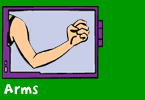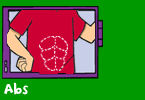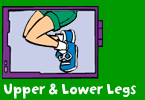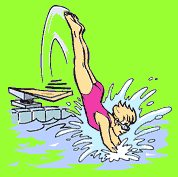BAM! Body and Mind
Physical Activity
Physical Activity

 Chris Colwill used to be a gymnast... until age seven when he discovered diving!
Chris Colwill used to be a gymnast... until age seven when he discovered diving!
This 18-year-old from Brandon, Florida is an eight-time Junior National champion, and a Senior National champ too. Diving has taken him to Canada, the Czech Republic, Germany, and Mexico — twice! And he hopes that one day it will take him to the Olympics. Chris says, "I want to do really well in the Olympic trials to get to the Olympics, but if not, that's okay. It's pretty hard. And there are other meets like the Olympics — just not televised."
Read More!




Platform diving became an Olympic event in 1904. Springboard diving made it in 1908.
In January 1991, Fu Mingxia from China became the world's youngest platform champion. She was only 12!
Divers hit the water at speeds of up to 34 miles per hour!
In January 1991, Fu Mingxia from China became the world's youngest platform champion. She was only 12!
Divers hit the water at speeds of up to 34 miles per hour!
Centers for Disease Control and Prevention, 1600 Clifton Rd, Atlanta, GA 30333, U.S.A
Tel: (404) 639-3311 / Public Inquiries: (404) 639-3534 / (800) 311-3435
Tel: (404) 639-3311 / Public Inquiries: (404) 639-3534 / (800) 311-3435
